Kütahya is an important city located in the Inner Aegean Region of Turkey, known for its ancient roots and rich cultural heritage. With its architectural structures from the Ottoman period, mastery in tile art, natural beauties, and thermal springs, it is an attractive destination for both history and nature enthusiasts. As the birthplace of Evliya Çelebi, Kütahya is one of the cities that inspire the spirit of travelers. In this city, one can trace the marks of the past through its narrow streets, embark on a journey through time in its museums, and confront history in its ancient cities.
In addition to its historical structures, Kütahya also stands out with its natural beauty. From the Phrygian Valley to the Domaniç Forests, from the Enne Dam to its thermal springs, many natural wonders offer peaceful moments to visitors. The ancient cities, castles, mosques, museums, and nature parks in the city provide diverse travel routes appealing to all interests. With its historical richness and natural texture, Kütahya is a calm and unique Anatolian city worth discovering.
🏛️ Historical and Cultural Sites
1. Aizanoi Ancient City
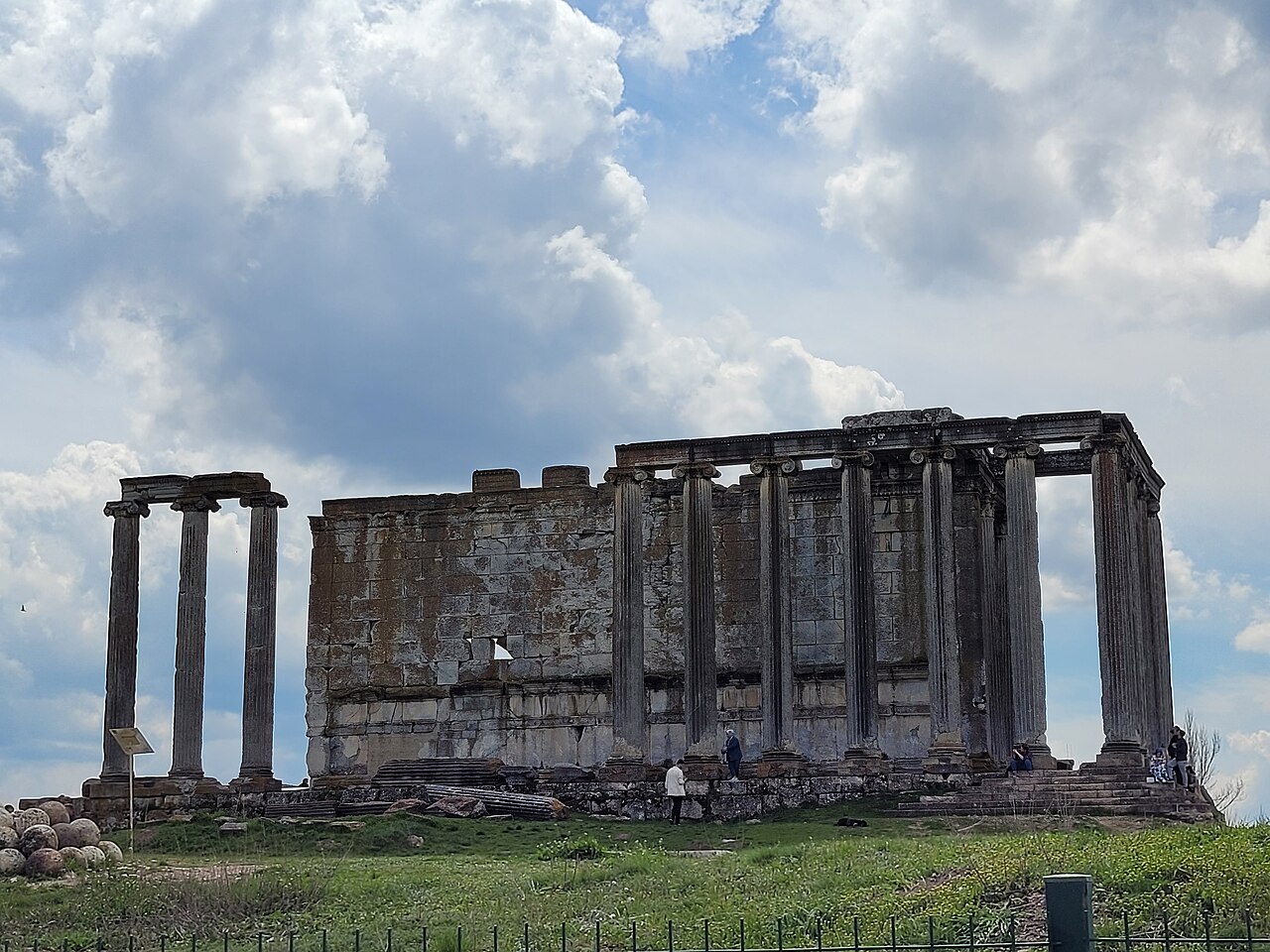
Aizanoi Ancient City is an important archaeological site located in the Çavdarhisar district of Kütahya, housing some of the best-preserved structures from the Roman period. With a history dating back to 3000 BC, this city is known as one of the most significant cities of Phrygia. Especially during the Roman Empire, Aizanoi became a major center of trade and culture and held great religious and social significance. The most striking structure of the city is the Temple of Zeus, one of the best-preserved Roman temples still standing in the world. The temple holds a special place in the world of archaeology due to both its architectural grandeur and historical value.
In addition to the Temple of Zeus, Aizanoi also stands out with its ancient theater and stadium complex. These two structures were built adjacent to each other, forming a rare example of such architecture worldwide. The ancient city also includes an agora, baths, colonnaded streets, and a building believed to be one of the world’s first stock exchanges. The structures unearthed through excavations reveal the region’s rich historical past and attract significant attention from both local and foreign tourists each year. Aizanoi is considered one of Turkey’s most valuable ancient cities in terms of both cultural and archaeological importance.
2. Kütahya Castle
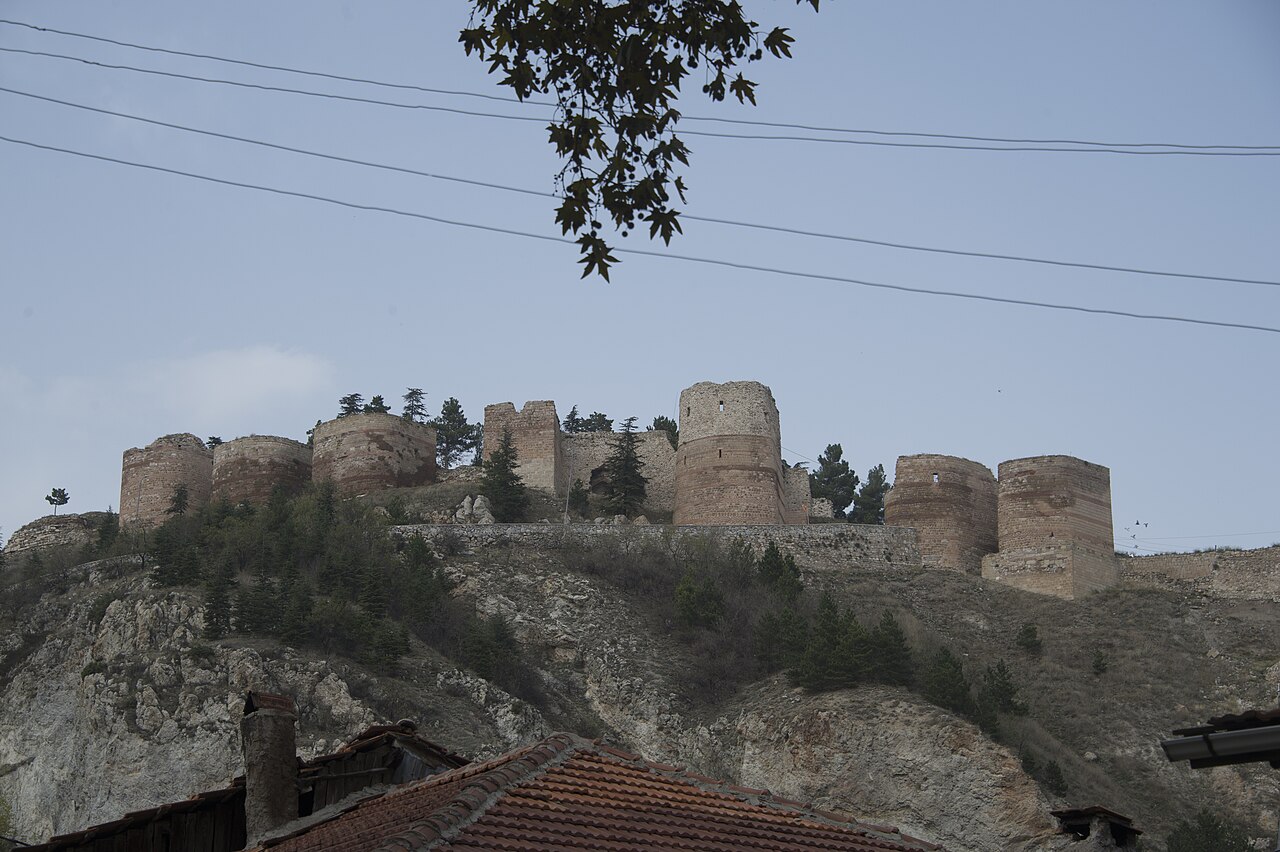
Kütahya Castle is a historic structure located in the city center, in the Maruf neighborhood, and is one of the symbols of the city. Originally built in the 8th century AD by the Byzantines, the castle was later restored by the Seljuks, the Germiyanids, and the Ottomans, reaching the present day. The castle consists of three sections: the Upper Castle (Kala-i Bâlâ), the Inner Castle, and the Lower Castle. The Upper Castle dates back to the Byzantine period and is situated on a hill overlooking the city. The Inner Castle is located in the western corner of the Upper Castle, while the Lower Castle was constructed during the Ottoman period.
The architecture of Kütahya Castle features rubble stone, cut stone, and brick materials. With its 72 bastions, the castle is considered one of the largest in Turkey. The walls of the castle reached their current form through constructions and restorations carried out in different periods. Within the castle, there are the Kale-i Bâlâ Mosque and a fountain. Archaeological excavations at the site have revealed ceramic, glass, and metal artifacts from the Roman, Byzantine, Beylik, and Ottoman periods.
Kütahya Castle offers a unique experience to visitors with its historical and architectural features. From the top of the castle, it is possible to enjoy a panoramic view of the city. Additionally, the restaurants and cafes within the castle provide resting areas for visitors. Kütahya Castle is a place worth seeing for both history enthusiasts and nature lovers.
3. Kütahya Grand Mosque

Kütahya Grand Mosque is one of the most important religious structures from the Ottoman period that has survived to the present day and is located in the city center. Its construction began between 1381 and 1389 by the Governor of Kütahya, Prince Yıldırım Bayezid. However, after Bayezid was taken prisoner in the Battle of Ankara, the mosque was completed by his son, Prince Musa Çelebi. For this reason, the mosque is also known as “Yıldırım Bayezid Mosque.” In Evliya Çelebi’s Seyahatname, it is referred to as “Orhan Gazi Mosque.”
The mosque’s architecture has undergone various repairs and changes over time. In 1552, it was repaired by Mimar Sinan on the orders of Sultan Suleiman the Magnificent, and in 1889, during the administration of Kütahya Governor Veysel Pasha, it underwent a major restoration. During this restoration, the original structure was demolished down to the foundations and rebuilt from cut stone, giving the mosque its current form with domes and marble columns. The marble columns and plaques inside the mosque were brought from the ancient city of Çavdarhisar (Aizanoi), and the inscriptions on the walls were written by the calligrapher Tekirdağlızade Halil Kütahyavi.
Kütahya Grand Mosque is a rectangular building measuring 45 meters in length and 25 meters in width. It has a lead-covered roof consisting of two large central domes, six semi-domes, and four small corner domes. A minaret is located at the northeastern corner of the mosque, and it has three entrances from the east, west, and north. The interior of the mosque is spacious and airy, and its wooden pulpit, crafted without the use of nails, is a rare masterpiece. Additionally, the fountain inside the mosque provides a peaceful atmosphere for worshippers.
Still actively used today, Kütahya Grand Mosque serves both as a place of worship for the local community and as a site of historical and architectural interest for visitors. For those interested in history and architecture visiting Kütahya, the Grand Mosque is definitely a must-see. Especially during the month of Ramadan and religious holidays, the mosque offers a deeply spiritual atmosphere and has become a popular destination for both local and foreign tourists.
4. Kütahya Archaeological Museum
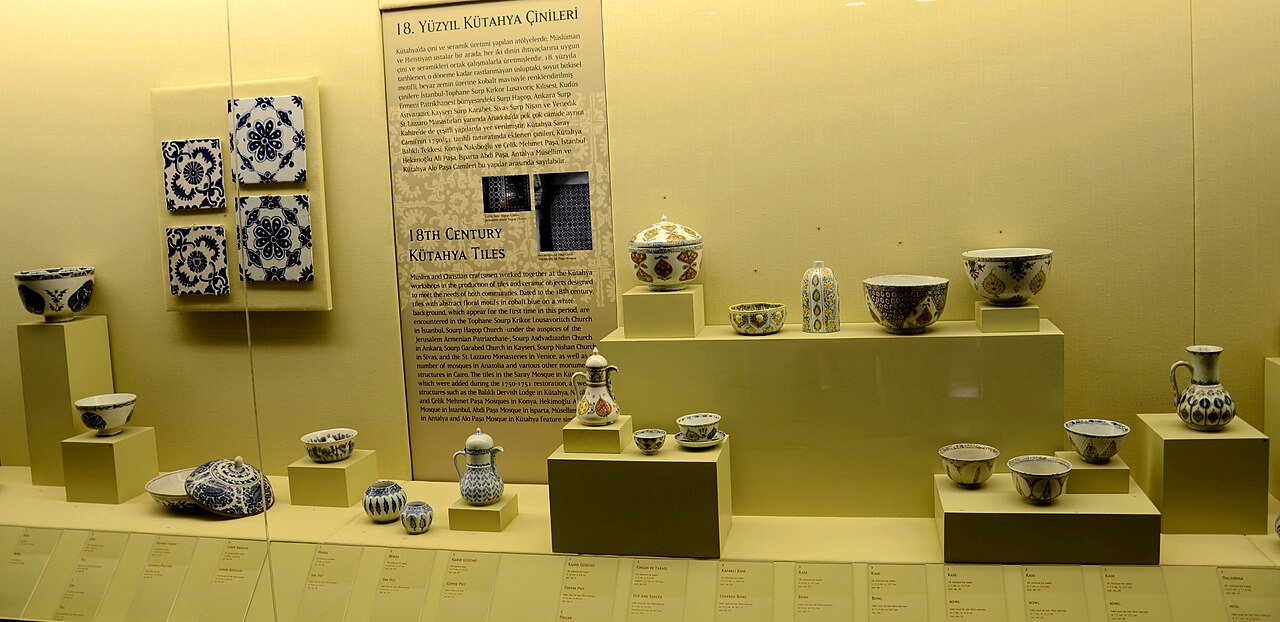
Kütahya Archaeological Museum is located in the city center, within the historical Vacidiye Madrasa building, which was built in 1314 by Umur Bin Savcı of the Germiyan Beylik. Constructed from cut stone, this structure is one of the original examples of Seljuk architecture and is notable for its nine small rooms opening into a domed central space. The museum was opened to visitors in 1965 and was reorganized after restoration in 1999. Situated right next to the Grand Mosque and within walking distance of the city center, it offers easy access for visitors.
The museum’s collection contains approximately 1,500 artifacts dating from the Late Miocene period through the Paleolithic, Chalcolithic, Early Bronze Age, Hittite, Phrygian, Hellenistic, Roman, Byzantine, Seljuk, and Ottoman periods. Among the most notable pieces is the Amazon Sarcophagus, discovered in 1990 at the ancient city of Aizanoi and dated to 160 AD. This sarcophagus is adorned with high-relief carvings depicting battles between Greek soldiers and Amazon women warriors and is considered one of the best-preserved Amazon sarcophagi in the world. Other important artifacts exhibited in the museum include Phrygian toys, statues of the Mother Goddess Cybele, Heracles, and Hecate, ceramics, oil lamps, glass works, and surgical instruments from the Hellenistic and Roman periods.
With its rich collection and historical atmosphere, Kütahya Archaeological Museum offers a unique experience for visitors wishing to explore the cultural heritage of the region.
5. Kütahya Tile Museum
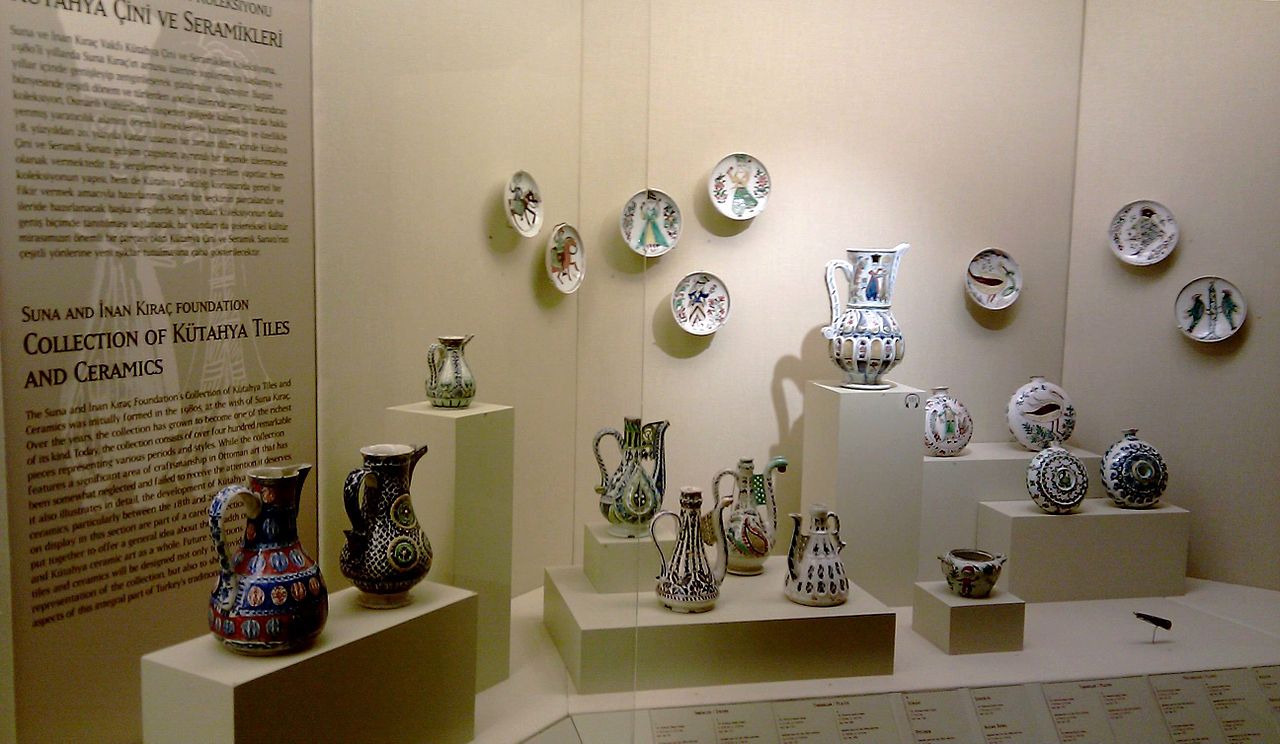
Kütahya Tile Museum is a historic building located in the Paşamsultan neighborhood of Kütahya, right next to the Grand Mosque, and holds the distinction of being Turkey’s first and only tile museum. The museum was established by restoring the imaret (public kitchen), built in 1411–1412 by the Germiyan Bey II. Yakup Çelebi, and was opened to visitors by the Ministry of Culture and Tourism on March 5, 1999. The museum building features an original architectural design with a domed central area with a fountain, surrounded by domed iwans on three sides and two rooms. Due to the octagonal marble fountain inside, it is also popularly known as the “Gök Şadırvan” (Blue Fountain). In the tomb section lies the tiled sarcophagus of II. Yakup Bey, who bequeathed his lands to the Ottoman Empire.
The museum’s collection displays tile examples from Kütahya and İznik, spanning from the 14th century to the present day. These works include architectural tile elements, inscriptions, vases, plates, panels, and household items made from tile. In addition, materials used in tile production—such as paints, brushes, and pattern samples—are also exhibited. At the entrance of the museum is a large stone foundation inscription (vakfiye) consisting of 39 lines, written in Ottoman Turkish and belonging to Germiyan Bey II. Yakup Çelebi.
Kütahya Tile Museum has a rich collection that showcases the historical development of tile art and highlights Kütahya’s importance in this field. Visitors have the opportunity to closely explore the intricacies and history of tile art through the works on display in the museum.
6. Lajos Kossuth Museum
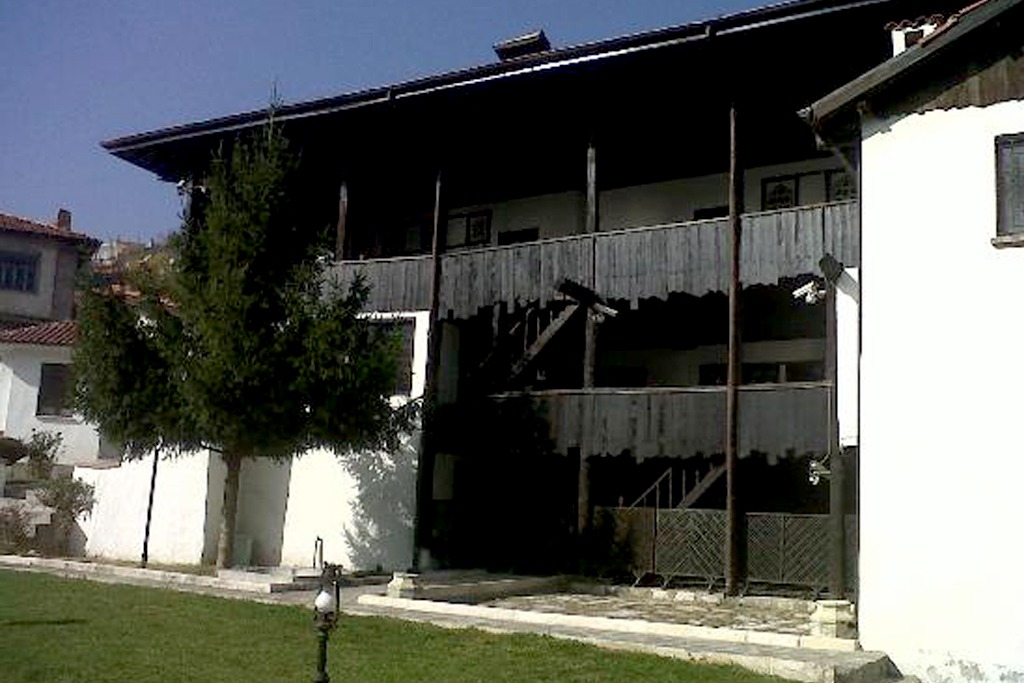
Kütahya Kossuth House Museum is a traditional Turkish house from the 18th century, where the leader of the Hungarian independence movement, Lajos Kossuth, was hosted with his family between 1850 and 1851. Located on Hungarian Street in the Börekçiler neighborhood, this two-story, seven-room wooden mansion was restored by the Ministry of Culture and Tourism in 1982 and opened to the public as a museum.
The museum is furnished with Lajos Kossuth’s personal belongings, objects specific to Hungarian culture of the period, and ethnographic artifacts from a classical Turkish home. Visitors can see Kossuth’s study room, photocopies of the Turkish grammar book he wrote, musical instruments, an 18th-century piano, and old photographs of Budapest.
The museum is closed on Mondays and open to visitors from 08:45 to 17:30 on other days. Admission is free.
Kütahya Kossuth House Museum holds historical and cultural significance for both Hungary and Turkey and offers visitors the opportunity to closely explore the political events and lifestyle of the mid-19th century.
7. Dumlupınar Martyrs’ Memorial
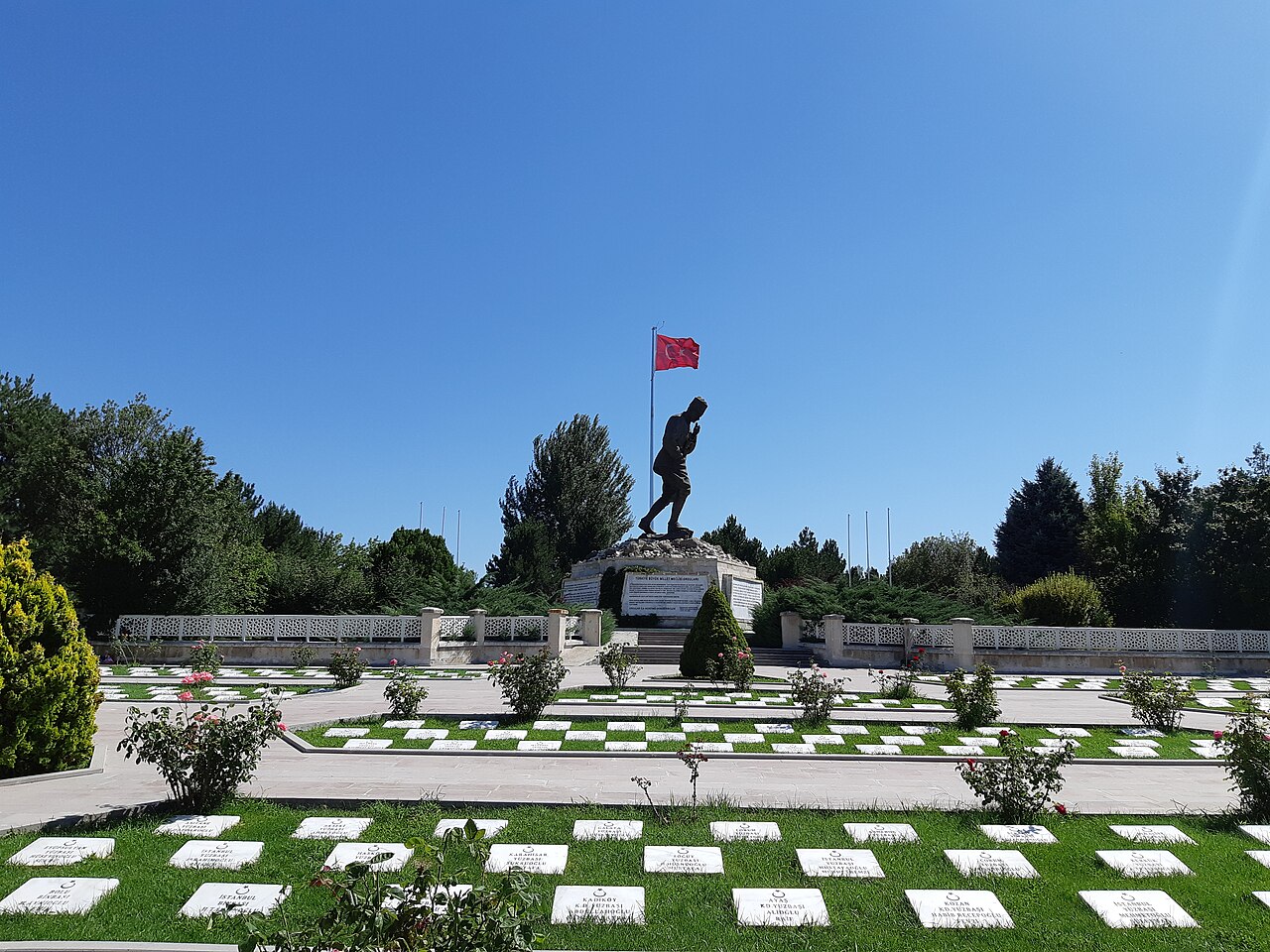
Dumlupınar Martyrs’ Memorial is a monumental site located in the Dumlupınar district of Kütahya, built to honor the memory of the soldiers who were martyred during the Battle of the Commander-in-Chief, one of the most significant victories of the Turkish War of Independence. This battle, which took place between August 26 and 30, 1922, ended in victory for the Turkish army and marked a turning point in the foundation of the Republic of Turkey. The memorial was opened to visitors by the Ministry of Culture and Tourism on August 30, 1992, the 70th anniversary of the Great Offensive.
The memorial site contains gravestones for 500 soldiers and 100 officers whose names have been identified. Additionally, various monuments throughout the area symbolize different aspects and heroes of the War of Independence. These include the Three Commanders Monument representing Atatürk, İsmet İnönü, and Fevzi Çakmak; the Militia Monument symbolizing the people’s collective struggle; the Martyr Father-Son Monument depicting a son embracing his martyred father; and the Mehmetçik Monument located at the hilltop. Other structures such as a prayer area (namazgâh) and a fountain are also available for visitors.
Dumlupınar Martyrs’ Memorial plays an important role as a symbol of Turkey’s independence struggle and welcomes thousands of visitors every year during Victory Week events held between August 26 and 30.
8. Germiyan Street
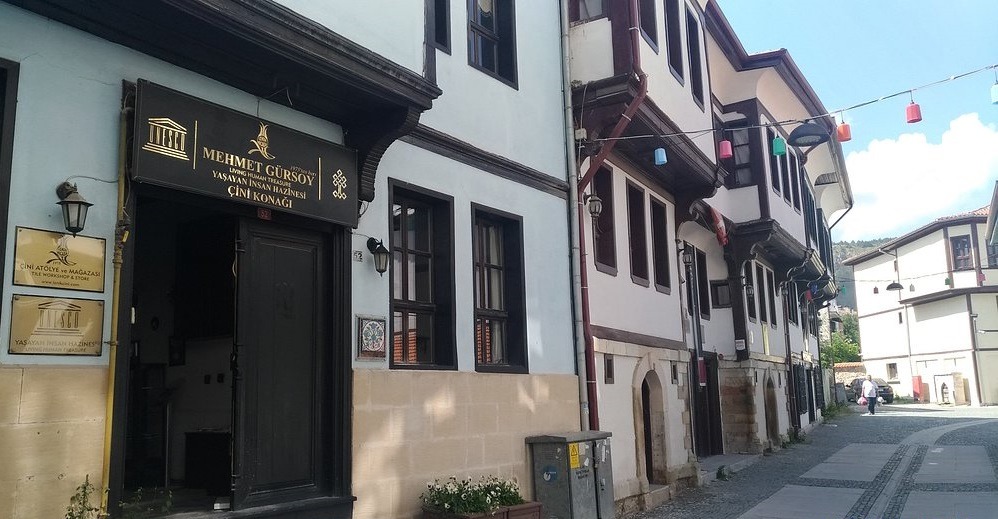
Germiyan Street is a historic street located in the center of Kütahya, featuring some of the finest examples of 19th-century civil architecture. The two- and three-story wooden mansions from the Ottoman period, oriel windows, wide eaves, and narrow stone-paved alleys give visitors the feeling of traveling back in time. This street stands out with its rare examples reflecting the traditional residential architecture of Anatolia. Additionally, the mansions on Germiyan Street have been restored in accordance with their original form and today host various cultural events.
Germiyan Street is notable not only for its architecture but also for its historical significance. Known as an area where Ottoman princes received their education, it was home to important figures such as Prince Alaaddin Ali Çelebi and Prince Bayezid III. Today, structures such as the Germiyan Mansion, City History Museum, Sıtkı Olçar Tile Museum, and Kütahya Culture and Art House contribute to the cultural richness of the street. Furthermore, tile workshops, cafés, and souvenir shops along the street offer visitors both a historical and artistic experience.
🌿 Natural Beauties and Nature Areas
9. Phrygian Valley
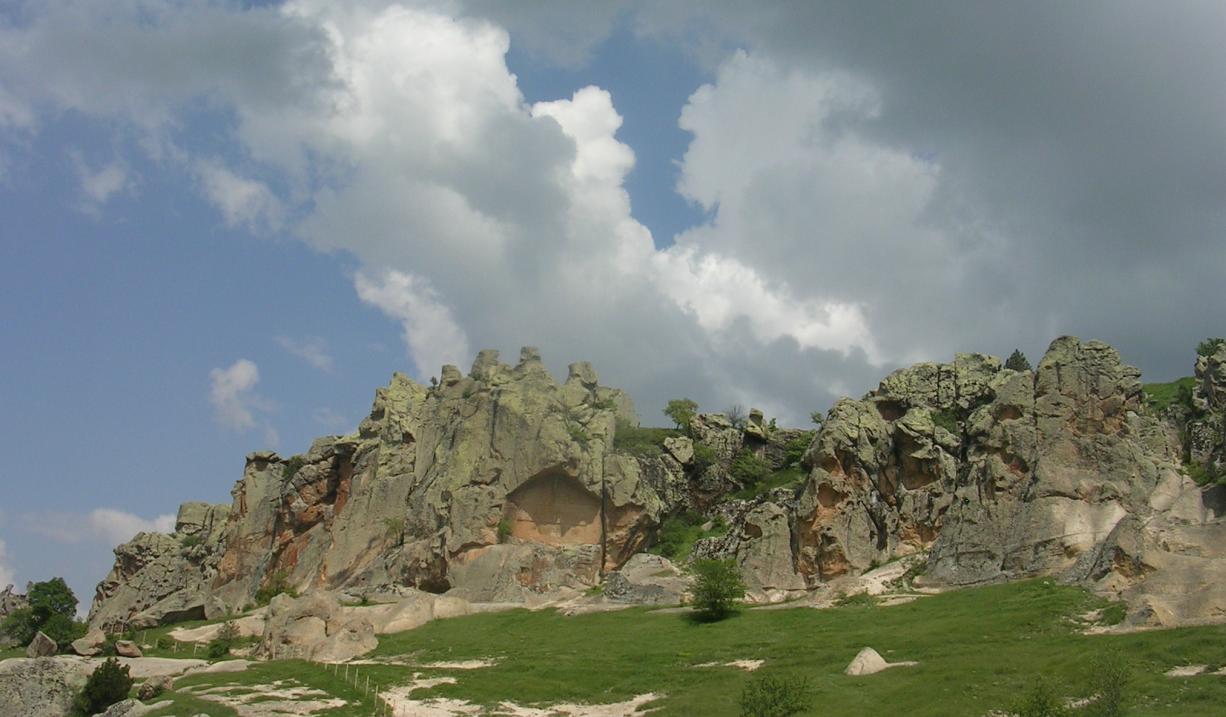
Phrygian Valley, located to the east of Kütahya and extending into the provinces of Eskişehir and Afyonkarahisar, is one of Turkey’s most impressive archaeological and natural areas. Shaped by the Phrygians approximately 3,000 years ago, the region is filled with rock-carved temples, tombs, fortresses, and settlements. The part of the Phrygian Valley within the borders of Kütahya starts from the village of Yeni Bosna, 3 km from the city center, and stretches to the village of Ovacık, covering villages such as Sabuncupınar, Söğüt, İnli, Sökmen, Fındık, and İncik.
The geological structure of the region, formed from volcanic tuff rocks, allowed the Phrygians to easily carve and construct open-air temples dedicated to the Mother Goddess Cybele, rock tombs, and cisterns. The Phrygian Valley is also part of the 506-kilometer-long Phrygian Way. This trail, with its hiking and cycling routes, offers a unique experience for nature and history enthusiasts.
The best times to visit the Phrygian Valley are during the spring and autumn months. The area is accessible by private vehicle, and there are also daily tours organized from Kütahya. The Phrygian Valley is an ideal destination for both nature walks and historical exploration.
10. Domaniç Forests
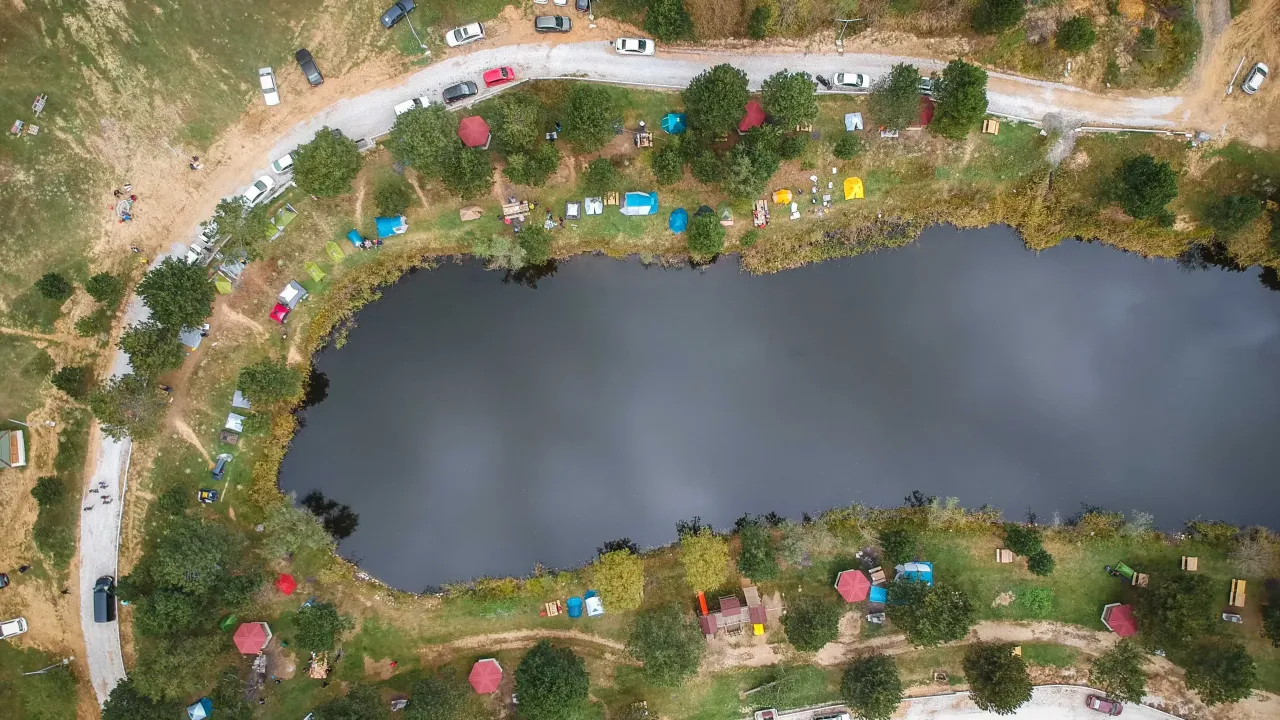
Domaniç Forests are located in the Domaniç district of Kütahya and are among the most impressive natural areas in Turkey. Surrounded by ancient beech and black pine trees with rich biological diversity, these forests offer a unique experience for nature lovers. The area is especially enchanting in the autumn months when the leaves turn from yellow to crimson in a vibrant display of color. Domaniç Forests also hold historical significance as the place where Osman Gazi, the founder of the Ottoman Empire, spent his childhood and where the Kayı tribe used to spend their summers. In this regard, it is a destination rich in both natural and cultural value.
For hiking and camping enthusiasts, Domaniç Forests provide an ideal environment with various trails and camping areas. Topuk Plateau Nature Park offers suitable spaces for picnicking and camping. Additionally, locations such as Palazoğlu Pond, Karderesi, and Kocayayla are popular spots for hiking and nature photography. These routes are shared in detail on platforms like Wikiloc. The area can be accessed from the Kütahya city center by private vehicle or public transportation. The best times to visit are during the spring and autumn seasons.
Domaniç Forests are a must-visit location for anyone looking to spend time in nature, breathe clean air, and find peace.
11. Mızık Pine Tree
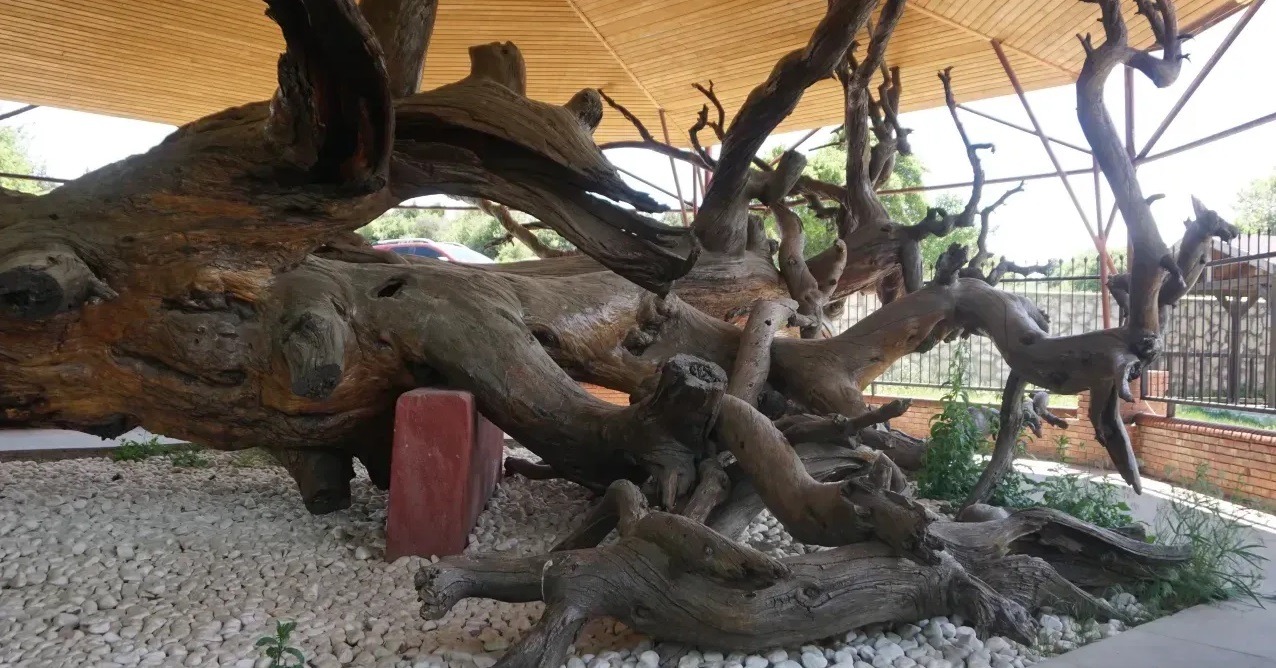
Mızık Pine Tree is a historic black pine located in the village of Domurköy in the Domaniç district of Kütahya, associated with legends about the infancy of Osman Gazi, the founder of the Ottoman Empire. According to legend, Osman Gazi’s grandmother, Hayme Ana, used to rock him to sleep in a cradle hung from the branches of this tree. For this reason, the tree has been referred to as “Mızık Pine” or “Cradle Pine” by the locals and is considered sacred.
Estimated to be around 740 years old, Mızık Pine stands 11 meters tall and has a circumference of 4.70 meters. It lost its vital functions due to natural causes in 1980 and was toppled by a strong wind in 1987. However, on July 15, 1988, it was registered and placed under protection as a monumental tree by the Board for the Protection of Cultural and Natural Heritage.
Domurköy, where Mızık Pine is located, is approximately 82 km from the Kütahya city center and 3 km from the Domaniç district center. The area is accessible by private vehicle or public transportation. Open to visitors, this historic tree is a remarkable site worth seeing for its connection to the founding era of the Ottoman Empire and its natural beauty.
12. Enne Dam Nature Park
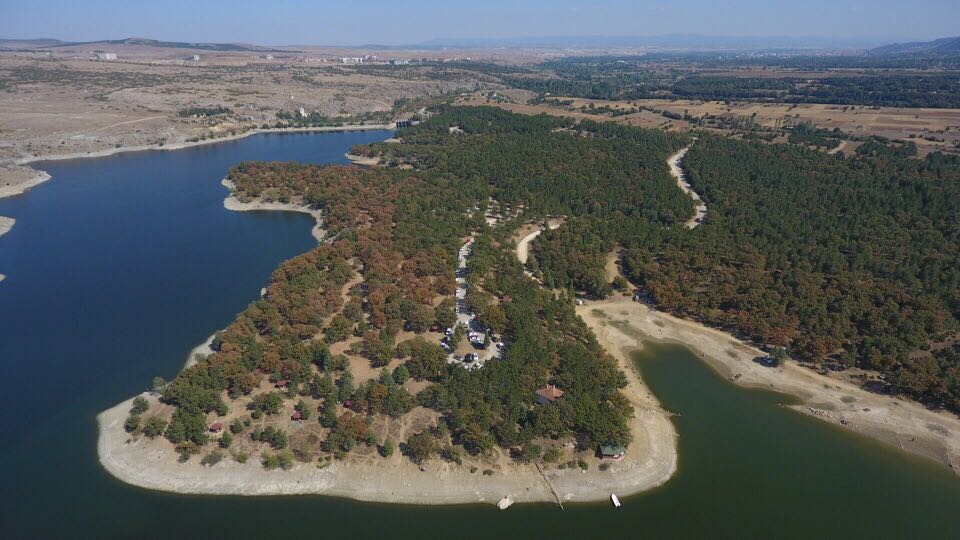
Enne Dam Nature Park is a natural wonder located approximately 14 km from the center of Kütahya, within the borders of Civli Village, and was declared a nature park in 2011. Surrounded by plant species such as oak, black pine, wild pear, wild plum, thyme, and cypress, the park offers visitors a unique experience combined with the tranquil view of the Enne Dam Lake.
The park features picnic areas, walking trails, cycling paths, children’s playgrounds, volleyball and basketball courts, as well as social amenities. In addition, boat tours are organized, and countryside lodging is available. The park is also rich in wildlife, home to species such as wild rabbits, hedgehogs, foxes, cormorants, and tree frogs.
As of 2025, the entrance fees are set at 60 TL per person and 180 TL per automobile. Entry is free for relatives of martyrs, veterans, and Ministry employees, provided that identification and vehicle registration documents match.
Enne Dam Nature Park is an ideal destination for anyone wishing to spend time in nature, breathe fresh air, and find peace. It offers a visual feast especially during the spring and autumn months.
13. Yoncalı Thermal Springs
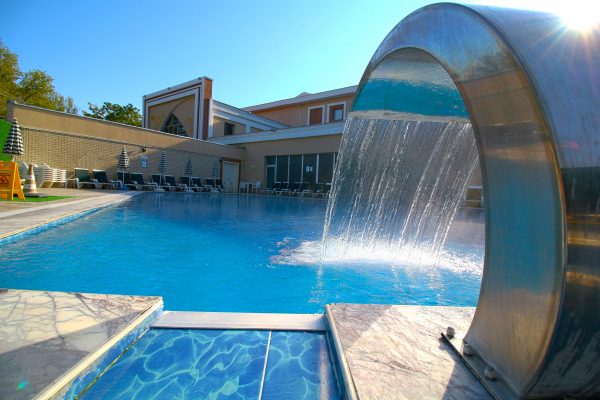
Yoncalı Thermal Springs are a well-established thermal health center located approximately 16 km from the center of Kütahya, situated at the foothills of Mount Kirazlı, with a history dating back to the 13th century. According to legend, Gülümser Hatun, the daughter of Anatolian Seljuk Sultan Alaaddin Keykubat II, found healing here, after which a bathhouse and a mosque were built in the area.
Thermal Water Features and Health Benefits
The thermal water of Yoncalı has a temperature of 42°C and is rich in bicarbonate, calcium, magnesium, and sulfate. This mineral-rich water is known to support the treatment of rheumatic diseases, joint and muscle disorders, skin conditions, and lumbar and cervical hernias. It is also recognized for its skin-enhancing effects.
Accommodation and Facility Options
There are various accommodation options available in the Yoncalı Thermal Springs area. For example, Yoncalı Thermal Hotel & Spa offers 73 rooms, all equipped with thermal water. The facility includes indoor and outdoor thermal pools, Turkish baths, saunas, steam rooms, and a range of massage services. A physical therapy and rehabilitation center is also available.
Other facilities in the area, such as ES Thermal Hotel & Spa, also provide thermal pools, spa services, and comfortable accommodations.
Transportation and Visitor Information
Yoncalı Thermal Springs are located 16 km from Kütahya city center and are easily accessible by private car or public transportation. The site is approximately 50 km from Zafer Airport. The springs can be visited year-round, but spring and autumn are considered the best times due to favorable weather and natural beauty.
Yoncalı Thermal Springs stand out as a destination that combines health, relaxation, history, and natural charm.
🕌 Other Notable Places to Visit
14. Tiled Mosque

Located in Kütahya’s Maltepe neighborhood, the Tiled Mosque (Çinili Camii) is a unique structure built in 1973 by painter and ney player Ahmet Yakupoğlu. The mosque stands out for its distinctive architecture and ornamentation. Its two-story, octagonal-plan, single-domed main body reflects the style of the Seljuk Beyliks period, while its minaret carries elements reminiscent of Central Asian Turkish architecture. The mosque’s exterior is entirely covered with specially produced blue Kütahya tiles, while its interior is adorned with painted decorations. The interior of the dome is decorated with the Ihlas Surah along with the Basmala, and tile panels featuring verses written in Jali Thuluth script are placed above the mihrab and windows.
In 2018, the mosque was closed to worship due to cracks and ground shifts in the structure. It later came into public focus through various reinforcement and restoration efforts. Due to slope issues and structural damage that threatened the building’s safety, a decision was made in 2023 to demolish and rebuild the mosque in its original form. During this process, the mosque’s original tiles are planned to be preserved and integrated into the new structure.
15. Dönenler Mevlevihane (Whirling Dervishes Lodge)
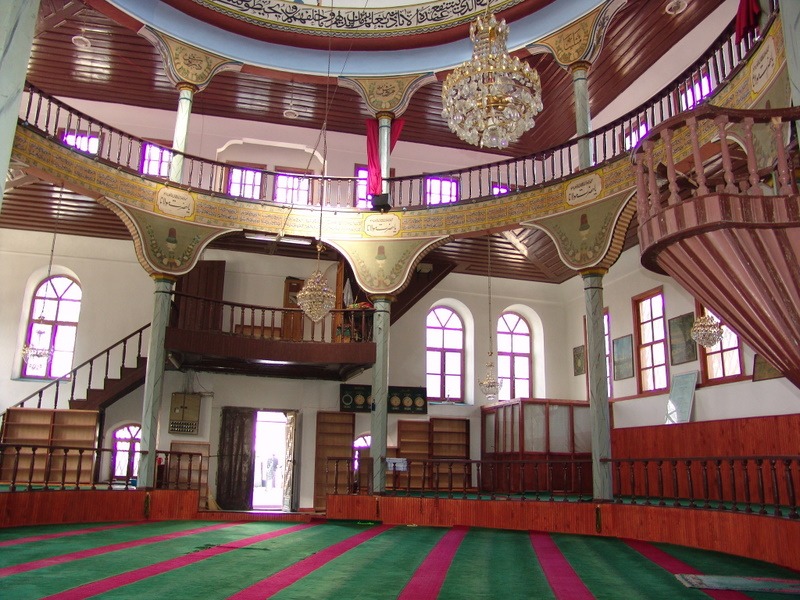
Dönenler Mevlevihane, located in the Börekçiler neighborhood of Kütahya, southwest of Dönenler Square, is one of the significant centers of Mevlevi culture in Anatolia. Established at the end of the 14th century by Celaleddin Ergun Çelebi, the grandson of Mevlânâ Jalaluddin Rumi, it is also referred to as the “Erguniye Dervish Lodge.” Its earliest structure is the Hezâr Dînârî Mosque, built between 1237 and 1243 by Emir İmâdüddin Hezâr Dînârî. After Celaleddin Ergun Çelebi was buried here, the mosque became the Ergun Çelebi Tomb, and a semahane (whirling hall) was added to its north, marking the initial foundation of the Mevlevihane.
The building underwent several restorations over time. Major renovations were carried out in 1812 by Halet Efendi, in 1841 during the reign of Sultan Abdülmecid, and between 1887 and 1889 by order of Sultan Abdülhamid II. In 1959, the semahane was restored by the General Directorate of Foundations and reopened for worship as a mosque, now known as “Dönenler Mosque.” Above the mosque entrance is a tile panel inscribed with “Ya Hazreti Ergun,” written by Halil Mahir. Above that, “Ya Hazreti Mevlana” is written by contemporary tile artist Ahmet Şahin.
Architecturally, the structure is nearly square in plan with an octagonal drum, representing a unique example of early Anatolian Turkish architecture. At the center of the semahane is a circular whirling area. On either side are elevated platforms for dervishes and Mevlevi followers. Above the entrance is the “mutrıb mahfili,” the place for the muezzin. The upper gallery surrounding the space was designated for women to observe the sema ceremonies.
Dönenler Mevlevihane played an important role in spreading Mevlevi culture throughout Anatolia and today serves as a space open to both worship and cultural visitation.
16. Hayme Ana Mausoleum
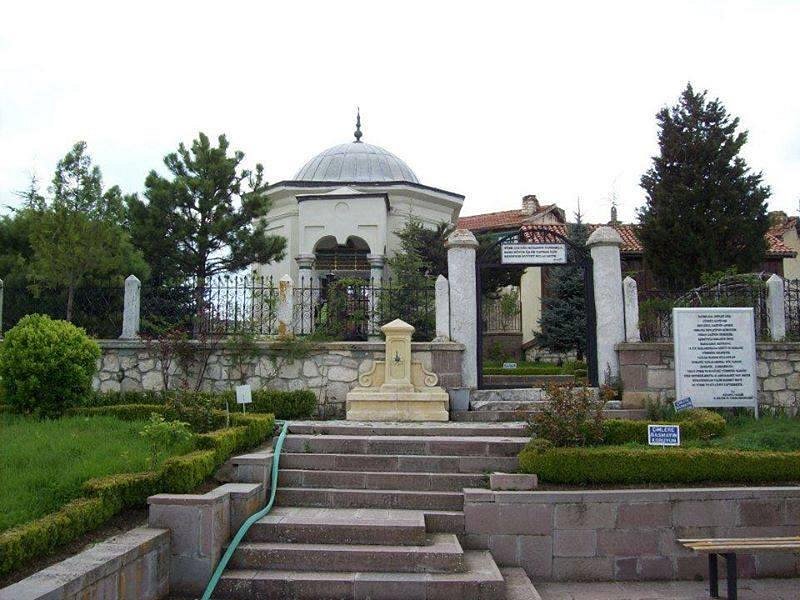
Hayme Ana Mausoleum is located in the village of Çarşamba in the Domaniç district of Kütahya and houses the grave of Hayme Ana (also known as Hayme Hatun), the grandmother of Osman Gazi, the founder of the Ottoman Empire, and the mother of Ertuğrul Gazi. A member of the Kayı Tribe from the Bozok branch of the Oghuz Turks, Hayme Ana is known in Turkish history by the title “State Mother” and is recognized for her leadership during the foundation of the Ottoman state. After the death of her husband, Gündüz Alp, she led her tribe and passed away in the Domaniç highlands around the 1280s. She was buried on the hill where she set up her tent each year.
In 1892, Ottoman Sultan Abdulhamid II located her grave and had the present mausoleum built. The mausoleum is notable for its simple and elegant architecture and, together with the surrounding landscaping, provides a peaceful setting for visitors. Every year, on the first Sunday of September, the “Hayme Ana Commemoration and Migration Festival” is held in the village of Çarşamba. During this event, Hayme Ana is honored through traditional migration walks, military band (mehter) performances, and prayers.
The mausoleum is approximately 84 km from Kütahya city center and can be reached by private vehicle or via transportation provided by the Domaniç Municipality. Hayme Ana Mausoleum offers a meaningful experience to visitors with its historical significance and spiritual value.
🏺 Museums and Art Venues
17. Kütahya Municipal Conservatory and Cultural Palace
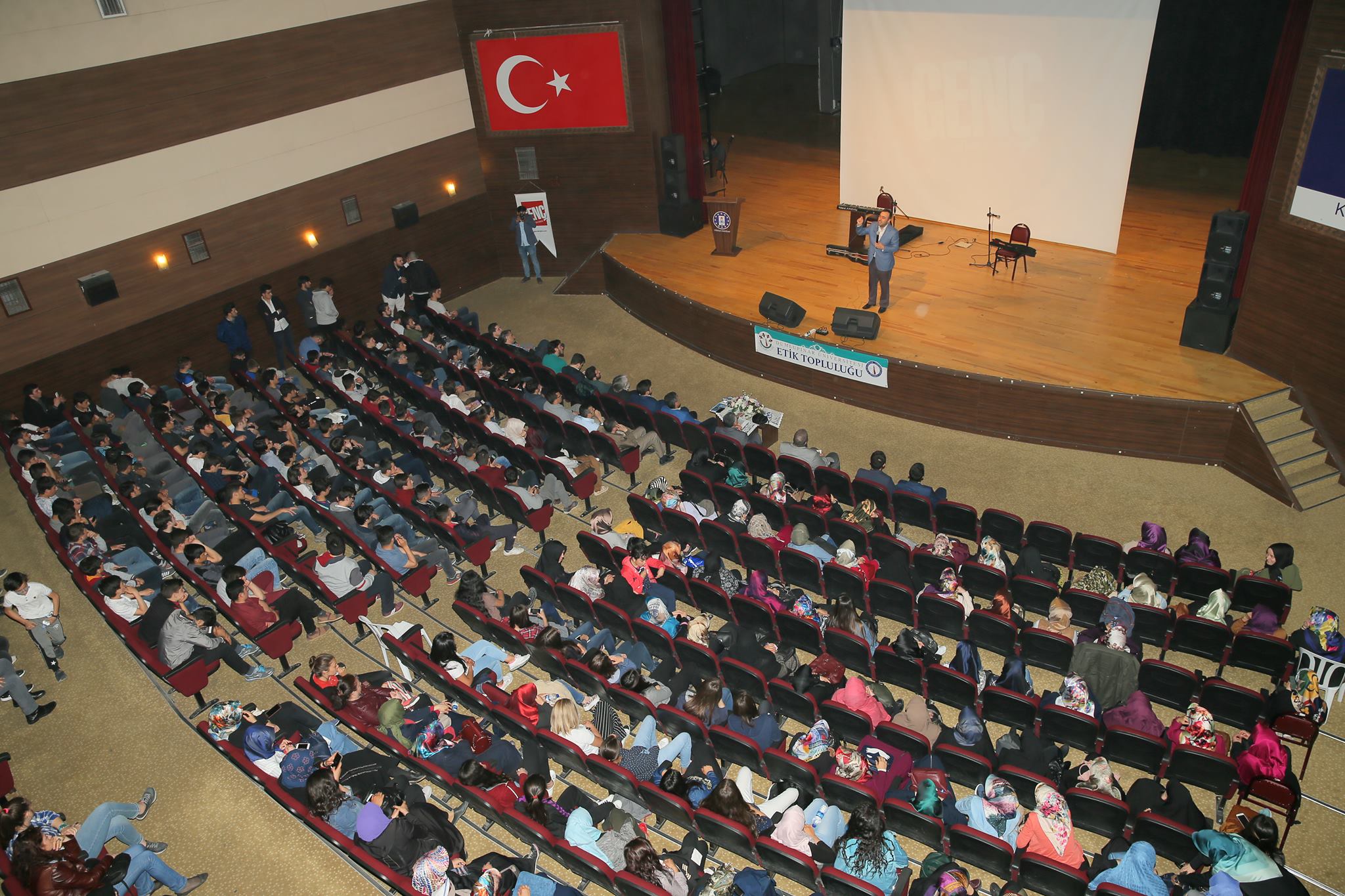
Kütahya Municipality has undertaken significant projects to enrich the city’s cultural and artistic life. One of these projects is the establishment of the Kütahya Municipal Conservatory. The foundation of the conservatory was laid in 2022, and it began its educational activities in 2023. Initiated by the Kütahya Municipality’s Directorate of Culture and Social Affairs, this project aims to preserve Kütahya’s cultural heritage and train new talents.
The conservatory operates within the Hezar Dinari Cultural Center, which has become the hub of Kütahya’s cultural events. It offers training in various branches of art, including Turkish folk music, Turkish classical music, folk dances, and theater. Additionally, the Ahmet Yakupoğlu Cultural Center hosts art education programs for preschool and primary school students.
Kütahya Municipality also plans to construct a modern cultural complex in place of the old Cultural Palace. This new facility will include conference halls, exhibition and foyer areas, an amphitheater, and a well-equipped library, among other social and cultural spaces. These projects aim to strengthen Kütahya’s cultural infrastructure and offer broader opportunities for art enthusiasts.
18. Dumlupınar Atatürk House Museum

Dumlupınar Atatürk Headquarters House is an important museum located in the Dumlupınar district of Kütahya, which witnessed some of the most critical moments of the Turkish War of Independence. The structure was built as a replica of the house used as headquarters by Commander-in-Chief Gazi Mustafa Kemal Atatürk during the Great Offensive on August 30, 1922. Following restoration efforts, it was opened to visitors on August 30, 2003.
The museum stands out with its interior arrangements that reflect the atmosphere of the time. Atatürk’s study room, meeting halls, and rest areas are exhibited along with period furnishings. Visitors can gain a closer sense of Atatürk’s leadership and the hardships of the War of Independence in this space. In addition, the museum is situated near other important sites such as the Dumlupınar Martyrs’ Memorial and the Commander-in-Chief National Historic Park, offering a comprehensive historical context.
Dumlupınar Atatürk Headquarters House offers visitors a meaningful experience with both its historical importance and cultural value. Located approximately 83 km from Kütahya city center, the museum can be reached by private vehicle or public transportation. It is open year-round, but it holds particular significance during the Victory Day commemorations on August 30.
19. Tavşanlı Municipality City Museum

Tavşanlı Municipality Ahmet Uluçay Museum is an important institution located in the Tavşanlı district of Kütahya, established to reflect the district’s historical and cultural heritage. Initially opened in 1989 on the second floor of the old municipal building, the museum required relocation due to its growing collection and increasing number of visitors. In response, Tavşanlı Municipality constructed a modern museum building with an indoor area of 602 square meters. The new museum building was opened to visitors at the end of 2024, named in honor of Tavşanlı-born film director Ahmet Uluçay.
The museum’s collection includes archaeological artifacts, ethnographic objects, and traditional handicrafts from various civilizations that inhabited the region from prehistoric times onward. Notable pieces include 8,000-year-old finds from the Tavşanlı Mound excavations, along with artifacts from the Roman, Byzantine, and Phrygian periods. In addition, traditional clothing, locks, and various handmade items donated by local residents are also displayed in the museum.
The museum is located in the Tavşanlı district center, on the site of the former fire station. For detailed information about visiting hours and entrance fees, it is recommended to consult the official website or communication channels of Tavşanlı Municipality.
⛲ Thermal and Relaxation Spots
20. Ilıca Thermal Springs
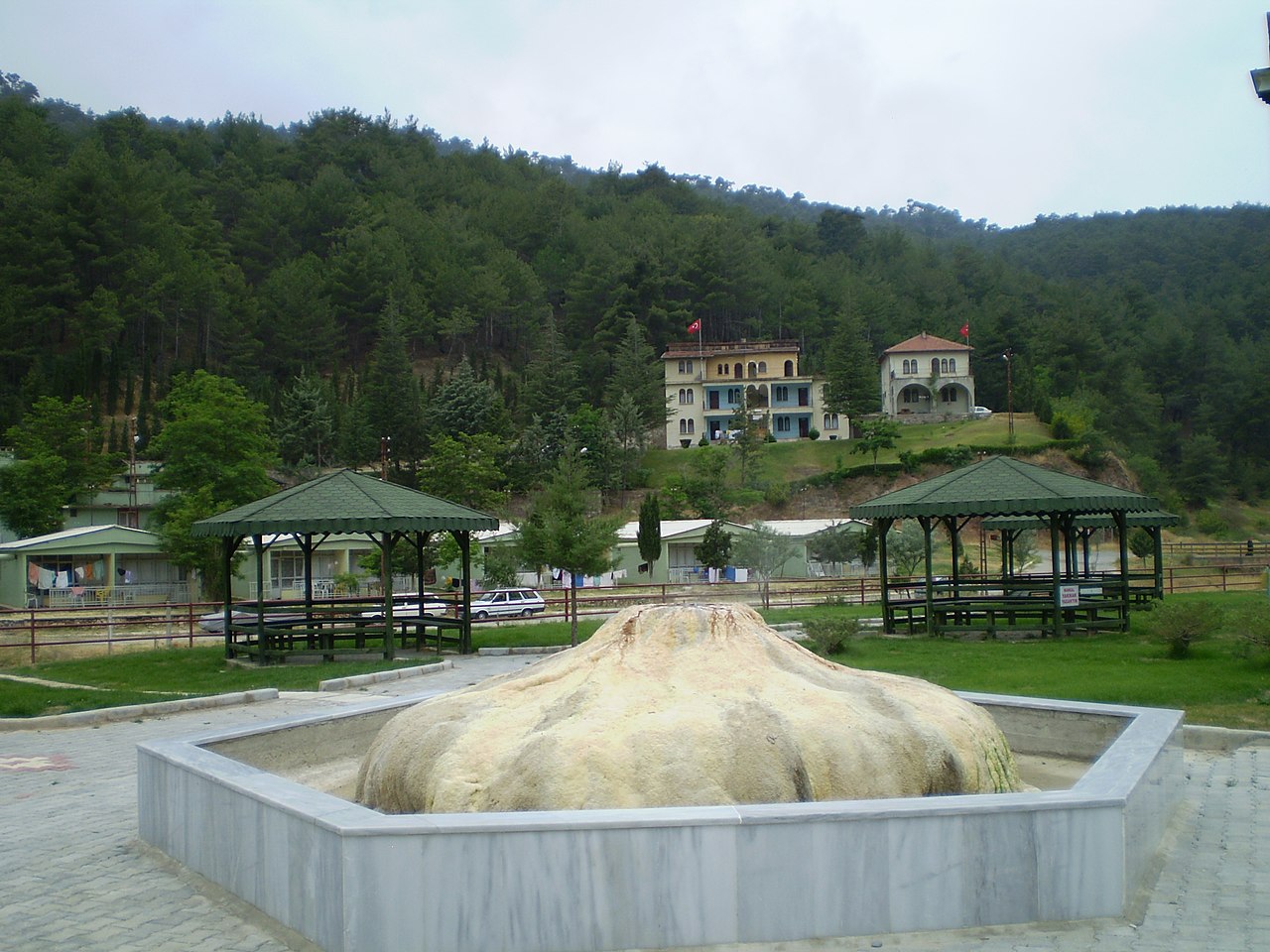
Ilıca Thermal Springs are a prominent health and relaxation center located in the north of Kütahya, approximately 28 km from the city center, in an area surrounded by pine forests. Situated 4 km off the 21st kilometer of the Kütahya-Eskişehir highway, these springs were declared a “Thermal Tourism Center” by the Council of Ministers on March 23, 1989.
Healing Waters and Health Benefits
The thermal waters of Ilıca range in temperature from 25°C to 43°C and are rich in calcium, magnesium, and bicarbonate. These mineral-rich waters are known to be beneficial for various health issues such as rheumatic diseases, muscle and joint disorders, skin conditions, nervous tension, gynecological disorders, and kidney stones.
Accommodation and Facility Options
The area offers various accommodation options. For example, Harlek Thermal Hotel is built on a 24,000 m² area and serves with 98 rooms and a 250-bed capacity. The rooms include amenities such as jacuzzis, underfloor heating, minibars, internet, and LCD TVs. Additionally, the hotel offers spa services including thermal pools, a sauna, steam room, salt room, and family baths.
Moreover, the Ilıca Day-Use Recreation Facilities provide a peaceful setting with 9 stone houses, 20 pergolas, barbecue areas, and children’s playgrounds, allowing visitors to relax in a natural environment.
Transportation and Visitor Information
Ilıca Thermal Springs can be reached by private vehicle or local minibuses from Kütahya city center. The springs are open year-round and offer a unique experience, especially in spring and autumn when the natural scenery is most beautiful.
With its natural beauty, healing waters, and comfortable accommodation options, Ilıca Thermal Springs is an ideal destination for those seeking both health and tranquility.
21. Gediz Ilıcasu Thermal Springs
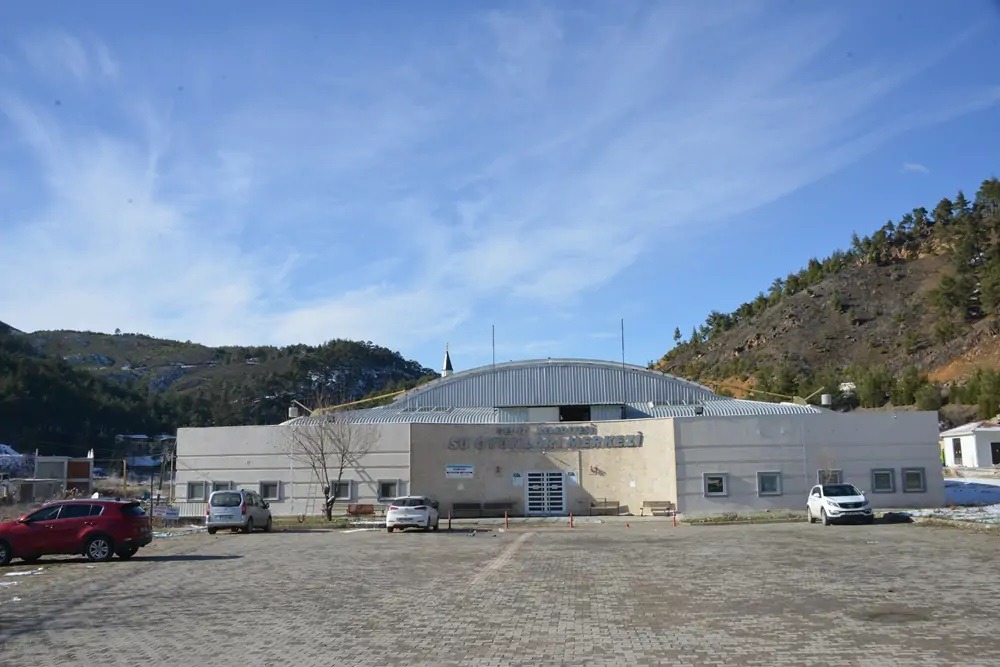
Gediz Ilıcasu Thermal Springs are a major health and wellness center located in the Ilıcasu neighborhood of Kütahya’s Gediz district, declared a “Thermal Tourism Center” by the Council of Ministers in 1987. Situated at an altitude of 940 meters above sea level and surrounded by pine forests, the thermal spring offers a healing environment in the heart of nature.
🌡️ Thermal Water Features and Health Benefits
The thermal water of Gediz Ilıcasu reaches 87°C and is rich in minerals such as sulfate, bicarbonate, sodium, magnesium, and metaboric acid. It is known to be beneficial for rheumatic diseases, skin conditions, kidney and urinary tract disorders, psoriasis, joint and arthritis problems, and gynecological ailments.
🏨 Accommodation and Facility Options
Gediz Ilıcasu Thermal Springs offer a total bed capacity of 464, including 40 apartments for 4 people, 52 apartments for 3 people, and 22 wooden cabins. Each apartment includes a living room, bedroom, kitchen, refrigerator, television, and a bathroom with thermal water.
The facility features separate aqua parks for men and women, indoor and outdoor thermal pools, Turkish baths, saunas, jacuzzis, steam rooms, salt rooms, children’s play areas, and 12 private baths for individual use.
🚗 Transportation and Contact Information
Gediz Ilıcasu Thermal Springs are located 13 km from the Gediz district center and 45 km from the Uşak–İzmir highway. The facility is accessible by private vehicle or public transportation.
Contact Information:
- Address: Ilıca Thermal Facility, 43600 Ilıcasu/Gediz/Kütahya
- Phone: (0274) 431 52 00
- Email: ilicatermal@gediz.bel.tr
- Website: ilica.gediz.bel.tr
Gediz Ilıcasu Thermal Springs are an ideal destination for visitors seeking both health and tranquility, offering healing waters, modern amenities, and natural beauty.
22. Eynal Thermal Springs (Simav)
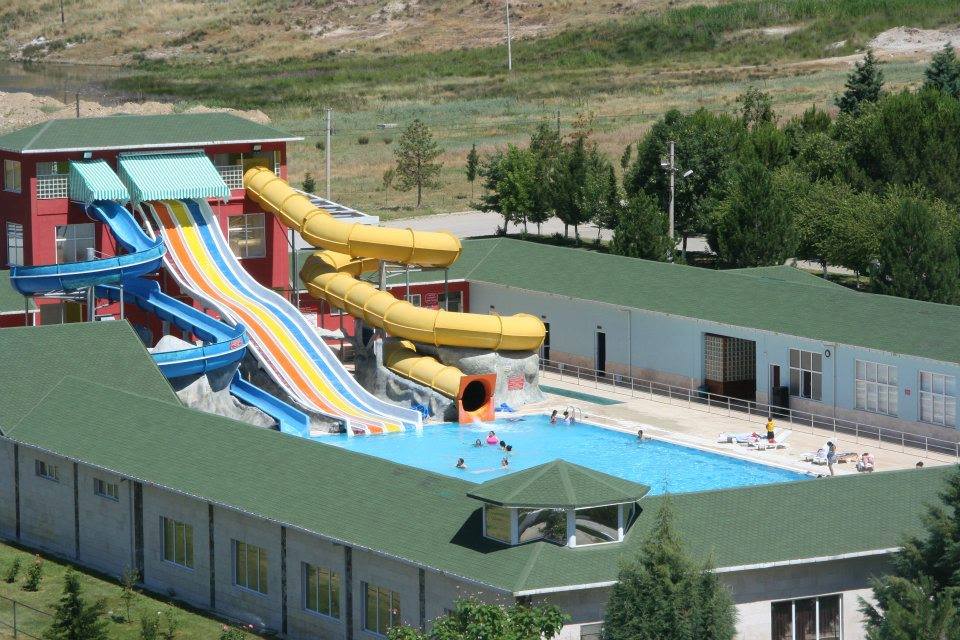
Eynal Thermal Springs are located approximately 4 km from the Simav district of Kütahya and are among the hottest thermal sources in Turkey. With water temperatures reaching up to 163°C, the thermal water is provided for use at a range of 70–80°C. This healing water is rich in minerals such as calcium, sodium, bicarbonate, sulfate, bromide, and fluoride. It is known to be beneficial for rheumatic diseases, joint disorders, skin conditions, nervous system disorders, and kidney stones.
Operated by the Simav Municipality, Eynal Thermal Springs were declared a Thermal Tourism Center in 1989. The facility includes 192 apartment units and 15 stone mansions. The apartments consist of a master bedroom, children’s room, kitchen, and bathrooms supplied with thermal water. The stone mansions are equipped with fireplaces, living areas, and modern amenities.
The complex features a semi-Olympic swimming pool, thermal aqua park, large and small Turkish baths, foot baths, children’s playroom, restaurant, and cafeteria, among other social areas. All indoor spaces are heated using a geothermal heating system.
Transportation to Eynal Thermal Springs is available via regular municipal buses from the Simav district center. The facility operates year-round, offering a peaceful vacation opportunity especially during the winter months with its hot thermal waters.
🌄 Scenic and Nature Spots
23. Kütahya Urban Forest

Kütahya Urban Forest is a recreational and picnic area located just 2 km from the city center, making it an ideal spot for those wishing to spend time in nature. Spanning approximately 30 hectares, the forest is surrounded by black pine, oak, and juniper trees and is home to rich flora and fauna. Wildlife such as badgers, squirrels, rabbits, and foxes also inhabit the area.
🌳 Facilities and Activities
Kütahya Urban Forest offers various amenities to its visitors:
Picnic Areas: Designated spots equipped with barbecues and seating areas.
Walking and Cycling Trails: Paths suitable for nature walks and bike rides.
Children’s Playgrounds: Play areas for children, ideal for families.
Sports Areas: Spaces available for outdoor sports activities.
Observation Tower and Viewing Terraces: Structures for enjoying nature and scenic views.
Camping and Caravan Grounds: Space for 100 caravans and 250 tents for camping.
Horse Farm and Drive-in Cinema: Activities include horseback riding and an outdoor cinema.
🚍 Transportation
Kütahya Urban Forest is easily accessible. Bus lines 1, 2, 3, 4, 11, and 27 pass near the forest. The closest stops include Parkhayat Hospital and Şelale Mosque.
ℹ️ Visitor Information
Address: 100. Yıl Neighborhood, Urban Forest No:3, Kütahya City Center
Phone: +90 554 732 99 38
Opening Hours: 08:00 – 00:00
Entrance Fee: Admission is charged; for details, contact the facility.
Kütahya Urban Forest is a perfect option for those who want to connect with nature, have a picnic, go hiking, or camp. With its rich amenities and close proximity to the city center, it appeals to visitors of all ages.
24. Mount Şaphane and Plateau

Mount Şaphane is located in the Şaphane district in the southwest of Kütahya and, with an elevation of 2,120 meters, is one of the highest peaks in the region. Reaching this height at Ulugedik Hill, the mountain is one of the most significant natural areas in Western Anatolia.
🏞️ Natural Richness and Flora
Mount Şaphane stands out with its rich vegetation and endemic plant species. A total of 458 different plant taxa have been identified on the mountain. Among these are endemic species such as Rhododendron ponticum, Aethionema species, and Allium reuterianum. In addition, the lower slopes of the mountain are covered with pine, oak, and juniper forests.
🥾 Hiking and Camping
Mount Şaphane offers an ideal environment for hiking and camping. The plateaus located on its lower slopes attract visitors with their fresh air and natural beauty. There are also trekking and hiking trails in the surrounding areas of the mountain.
🌿 Plateaus and Picnic Areas
Kayranlı Plateau and Kırkpınar Plateau, located at the foot of Mount Şaphane, stand out for their cool climate and scenic nature. Visitors can camp, hike, and enjoy the fresh mountain air. Natural areas such as Kızıltepe Picnic Area and Değirmendere Stream also provide peaceful settings for relaxation.
📍 Access and Location
Mount Şaphane is located approximately 125 km from Kütahya city center, southwest of the Şaphane district. The summit’s coordinates are 39°03′45″N 29°14′30″E. Access to the mountain is provided by private vehicles.
Mount Şaphane and its surrounding plateaus are hidden paradises waiting to be explored by nature lovers. With its diverse flora, clean air, and natural beauty, it offers visitors an unforgettable experience.
25. Simav Mountains
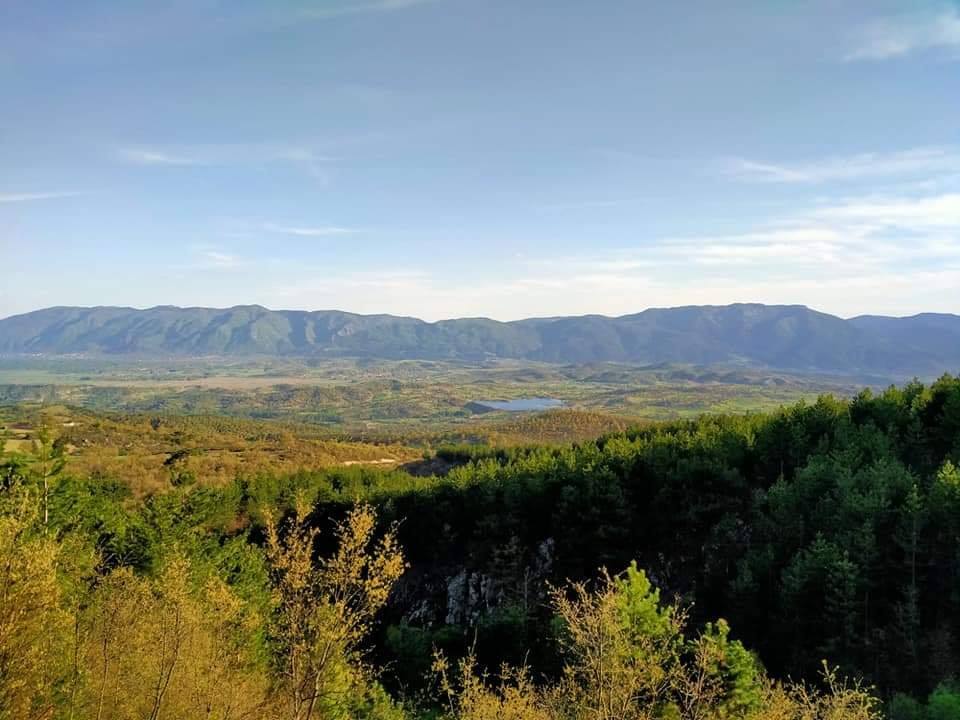
The Simav Mountains are located to the south of Kütahya’s Simav district, stretching east to west, and form one of the most prominent mountain ranges in the region. This range spans approximately 120 km, beginning from the village of Abide in Kütahya’s Gediz district and extending to the village of Gölcük in Balıkesir’s Sındırgı district. The highest point is Mount Simav, which reaches an elevation of 1,780 meters.
The Simav Mountains stand out with their rich vegetation and natural beauty. Gölcük Plateau, located at the foot of the mountains, is an ideal recreational area for those seeking cool air during the summer months, with its crater lake surrounded by pine forests. The plateau features hiking trails, picnic areas, and various social facilities.
Additionally, the town of Öreyler, located on the northern slope of the Simav Mountains, is one of the high mountain villages, sitting at an altitude of approximately 1,500 meters. The surrounding area is rich in chestnut, walnut, hazelnut, cornelian cherry, hornbeam, and pine trees. The region offers suitable areas for nature walks and camping activities.
The Simav Mountains are a natural wonder waiting to be explored by nature lovers and adventure seekers alike. With their diverse flora, cool plateaus, and stunning landscapes, they offer visitors unforgettable experiences.
